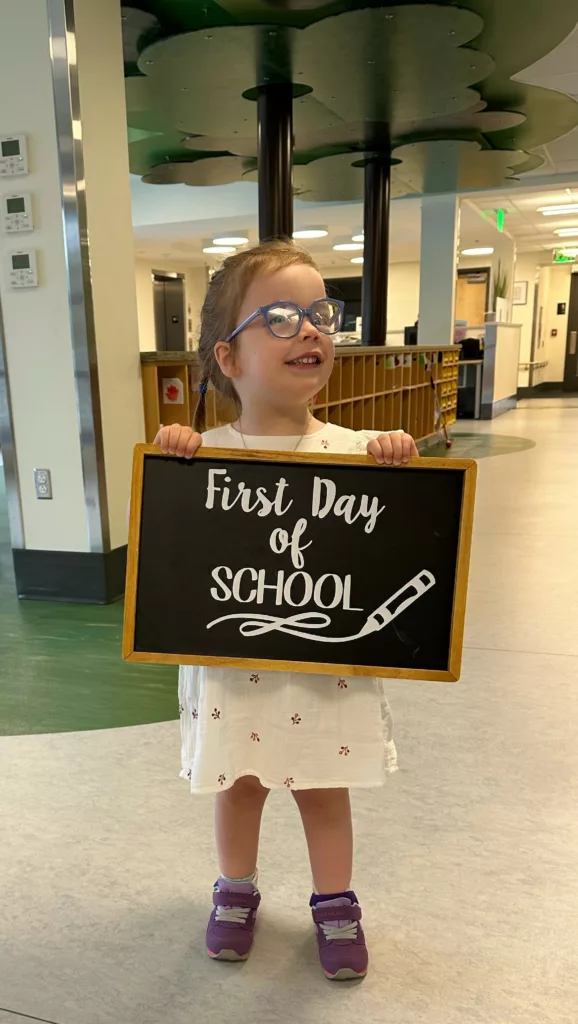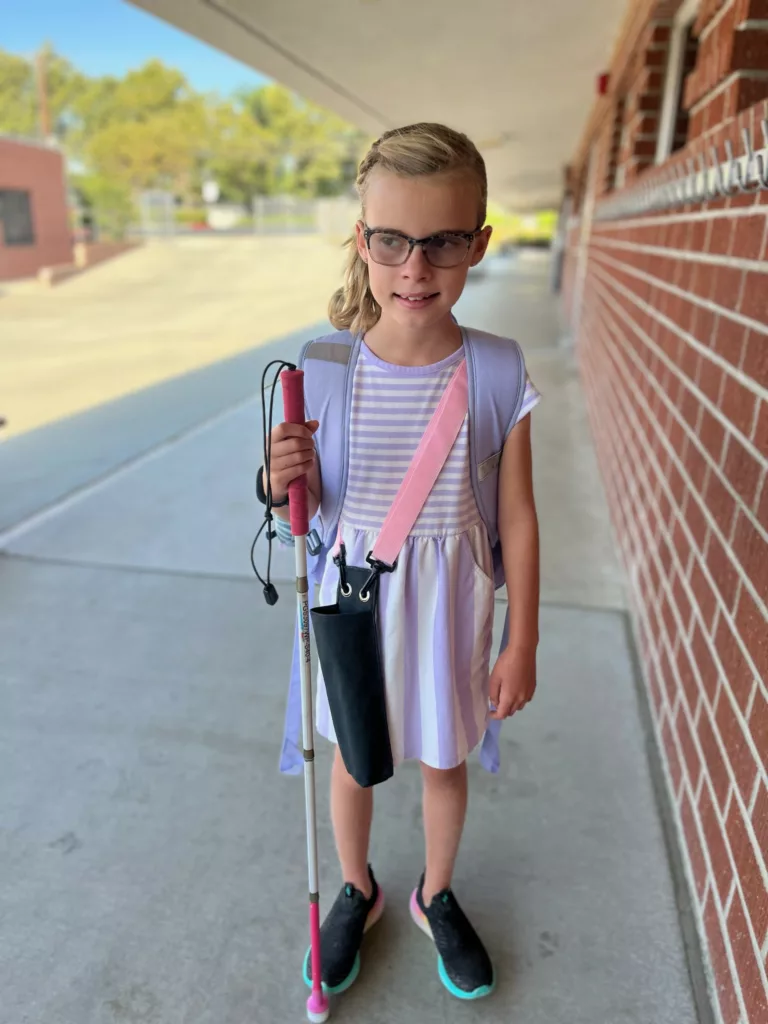Back to School Checklist for Your Child with a Visual Impairment
As teachers and staff prepare their rooms for another year, there are many steps you and your child’s Individualized Education Program (IEP) team can take to ensure a successful school year. Beyond shopping for supplies and choosing the perfect first-day-of-school outfit, consider these tips and ideas to discuss with your child’s IEP team before school begins.
Meet the Teacher
Butterflies, nerves, and excitement are common feelings for you and your child as you anticipate entering a new school year. To ease these feelings, here are some tips to help you feel comfortable and at ease:
- Many schools offer back-to-school nights or other opportunities to meet your teacher before the start of the school year. Take advantage of the time. Explore the new classroom, desk, and personal space.
- Prepare a “Get to Know Your Child and Family” blurb or fact sheet to share with your child’s new teacher and staff. The document can include your child’s strengths, hobbies, dislikes, and information about their needs.
- Take your fact sheet to the next level by creating a video for your child’s new teacher and staff. Showing your child at home, where they are comfortable, can highlight their personality, hobbies, abilities, and interests.
Orientation and Mobility
Some considerations for ensuring your child can navigate independently and confidently this school year may already be part of their IEP and preparations for the first day of school. Here are some additional steps to consider:
- Before school starts, work with the school and your Orientation and Mobility instructor to walk the new route to the classroom. Include important places like the cafeteria, bus or car rider doors, bathrooms, and the nurse’s office.
- For middle and high school students, consider including extended time to move between classes in your child’s IEP, allowing them to navigate the hallways when they are less crowded.
- Contact the transportation department to confirm the bus route. If your child is new to buses, consider touring and exploring a bus through the transportation department.
- For field trips, consider transportation options and ways to engage other students with your child. This provides your child with social opportunities. For example, if your child needs to ride a different bus due to accessibility issues, consider whether other students and a chaperone can accompany them.

Assistive Technology
Your child may have a new phone or be transitioning from an iPad to a computer this coming school year. Here’s how you can help your child with blindness or visual impairment prepare for changes in assistive technology.
- Communicate with your school’s TVI or AT staff to ensure the technology is charged, apps are installed, and everything is ready to go for your child on the first day. This will reassure your child that they will have access from the very first day.
- Ensure that any essential contact information for your child is readily available in a clear and accessible format.
Organization and Self-Help
Organization is critical for any student, but it is particularly vital for those who are blind. Self-determination is also essential for blind and visually impaired students, who should be encouraged to understand their needs and advocate for themselves.
- Practice opening and closing backpacks, lunch boxes, and other school supplies. Create an organizational system to facilitate maximum independence.
- Encourage students to organize their backpacks and lockers consistently. Using tactile labels or braille can help them quickly identify their belongings. Proper organization saves time and reduces stress, enabling students to focus more on their studies.
- Support a system that promotes independent communication with teachers about accommodations and seeking assistance when necessary. Developing these skills helps students gain confidence and independence, which are essential for their overall development.
Getting Social
Preparing for a new school year involves more than just academic readiness. Emotional and social preparations are equally important.
- Encourage your child to share their story with their peers, perhaps including a photo album, to explain their eye condition and how their classmates can best interact with them.
- Making new friends can be both exciting and nerve-wracking for your child. Consider providing a letter for the new students in the class, which the teacher can share. This letter can explain your child’s visual diagnosis, any specific staff members supporting your child, and, most importantly, your child’s interests and activities to help others connect with them.
- Exploring school activities and clubs can help your child build friendships and feel valued in the school community. Building a support network of teachers, peers, and family members can provide additional encouragement and assistance throughout the year.
- Lunch and recess are the most social parts of the day. If paraprofessionals accompany your child, remind them that being seated by an adult can be intimidating. Encourage the paraprofessional or support staff needed for feeding assistance to sit on the far side of the table.
- Get involved and be present at your child’s school. Volunteering in the classroom or joining the PTA are great ways to participate. Being involved allows you, as a parent, to see firsthand what works and what doesn’t.
- Consider planning meet-ups, birthday parties, and other social gatherings to create opportunities for social connection outside of school. Be sure to familiarize yourself with the school’s policy on birthday invitations before sending them. Activities outside of school offer an opportunity to bond with other parents and foster rapport within the community.

Ready for Success
By addressing these areas, blind students can start the school year with the tools and confidence they need to succeed. Remember, every child has the right to be treated as an equal, active member of their community. Proper preparation will support your child in the new school year.
Frequently Asked Questions
How can I support remote or hybrid learning? Ensure your child has reliable internet, an accessible device, and a quiet workspace. Schedule tech-check sessions before live classes begin.
What if the teacher changes accommodations mid-year? Request an IEP team meeting to review and adjust supports. Documentation of your child’s successes and challenges strengthens your case.